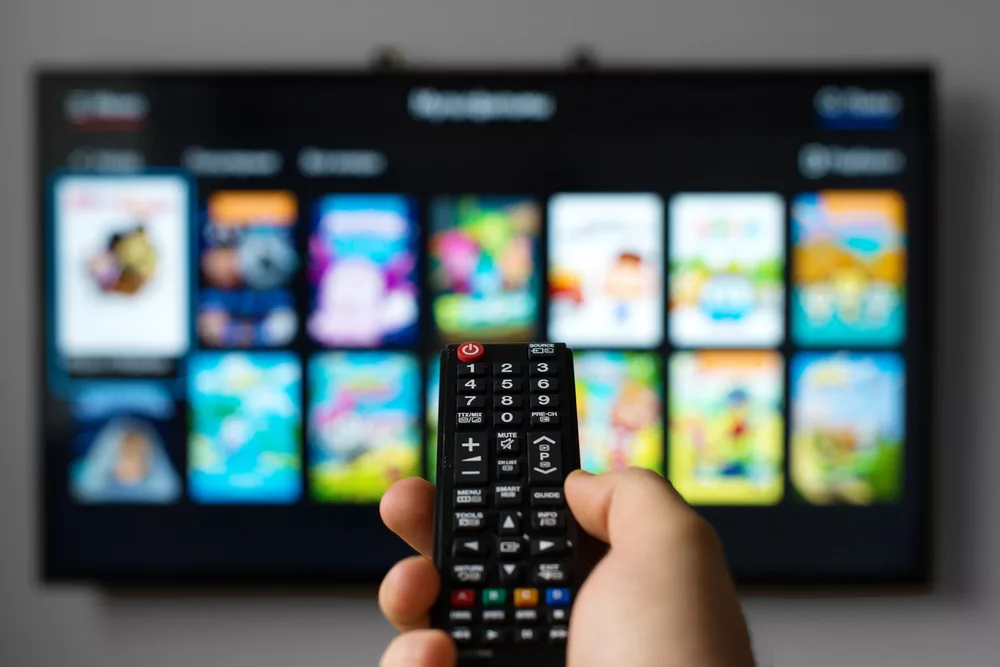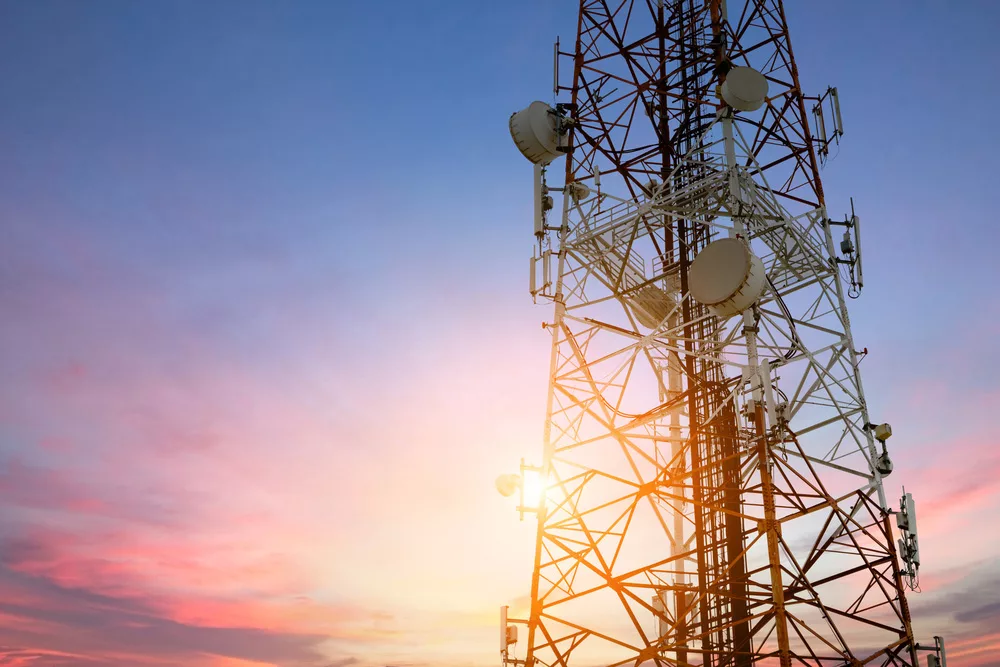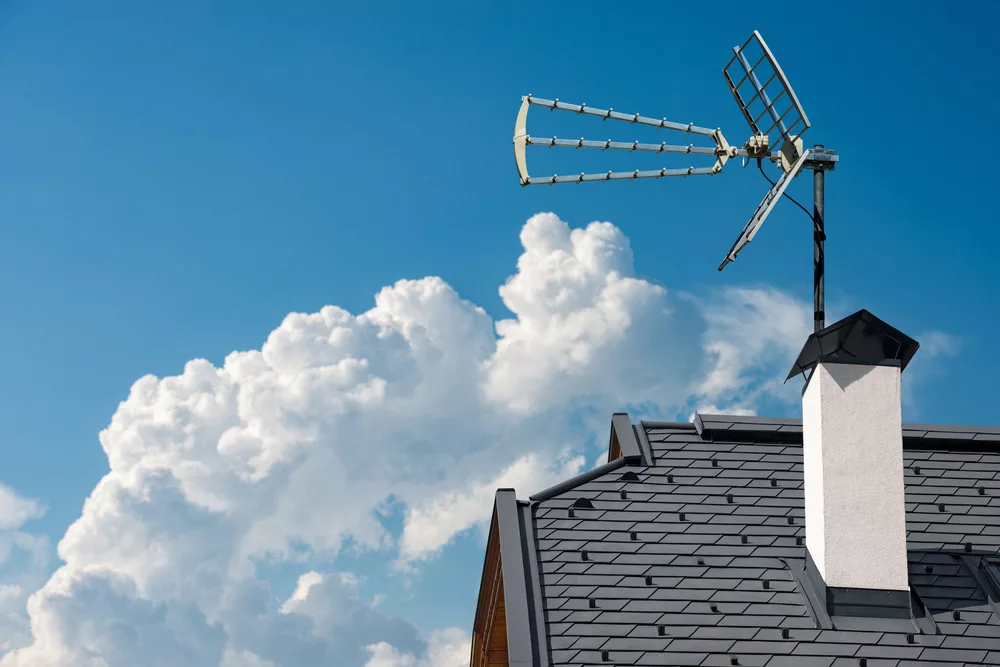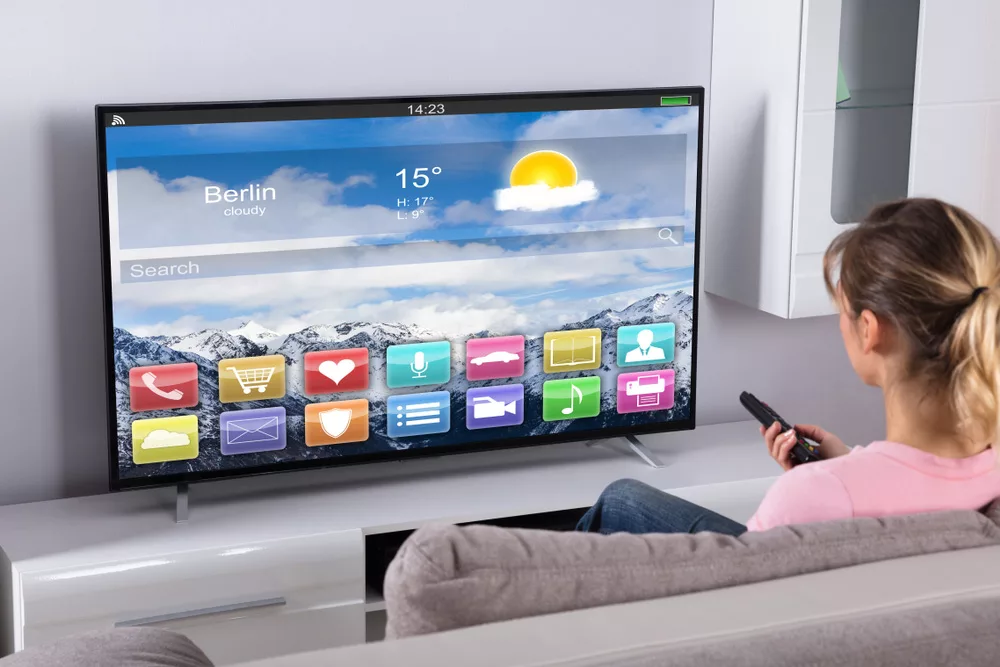Seamless internet connectivity and powerful processors are the order of the day with smart TVs. But people still ask, “do smart TVs have built-in antennas?”
Even if smart TVs have built-in antennas, can you use this feature to watch your local channels with nice picture quality?
This article will answer this question and show unique ways to use this technology.
Table of Contents
- Do All Smart TVs Have Built-in Antennas?
- Does Your Smart TV Need an Antenna for Local Stations?
- How Do You Connect a TV Antenna to a Smart TV?
- What Type of Antenna Should You Get for Your Smart TV?
- What Channels Can You Get on the Smart TV With an Antenna?
- Is It Possible To Get Local Channels Without an Antenna?
- Can You Get a TV Reception Without an Antenna or Cable?
- Is It Necessary To Use an Antenna With a Digital TV?
- Are There Apps That Allow You to Watch Local TV?
- Why Is My Smart TV Not Picking up Stations?
- Rounding Up
Do All Smart TVs Have Built-in Antennas?

A man holding a remote to a smart TV
In truth, most smart TVs have built-in antennas. And you can find this feature behind the TV. It’s a port that allows you to plug a cable box into your TV.
Further, the port is called an F-type connector or F-connector. Also, the port is useful for connecting an analog TV antenna.
The drawback is that the built-in antennas can’t connect you to local channels independently. And that’s because this feature aims to help you connect the TV via Wi-Fi or Bluetooth. In other words, the built-in antennas allow you to pair quickly with your home network and internet connection.
Does Your Smart TV Need an Antenna for Local Stations?
Connecting an antenna to your smart TV to get digital over-the-air local channels. Of course, you can use other efficient options to get local channels. But this method is the best because of its benefits. For example, TV antennas are practical for grabbing the beaming collection of signals in the air. Also, these antennas provide excellent-quality video and sound.
How Do You Connect a TV Antenna to a Smart TV?

A broadcast tower
First, locate your smart TV’s F connector port, and connect the TV antenna coax line. Second, go to your television settings menu and look for the control inputs. Third, check for the over-the-air or AirTV option. After, click on the scan for channels option. The scan should take about five minutes or more.
Once complete, you can scroll through the channel guide on your smart TV menu. Also, ensure that your TV antenna faces the local broadcast tower to get the best results.
If you need help knowing where the local broadcast towers are in your area, there are free tools that can help. This process is possible if you live within the local broadcast tower range that powers the local TV channels.
What if some channels are missing? You can try running another scan. Then, confirm if the channels are available in your area. Further, you can re-position your antenna to a better location.
What Type of Antenna Should You Get for Your Smart TV?

An outdoor antenna on a roof
You don’t need a special TV antenna with a smart television. In truth, the kind of antenna you should consider works perfectly with your distance from the local broadcast towers.
So, if you live over 40 miles from the broadcast tower, it’s best to use an outdoor TV antenna in your attic or roof. But if your proximity is about 30 miles from the broadcast towers, an indoor TV antenna may do the trick.
What Channels Can You Get on the Smart TV With an Antenna?
If your smart TV has a digital tuner, it will boost your chances of getting one or all of the big four broadcast networks, like NBC, CBS, ABC, and FOX. Also, you may get other free local networks.
Is It Possible To Get Local Channels Without an Antenna?
If you don’t have a TV antenna, you may not have access to free-air channels. But you can stream live or buy a cable TV subscription. Other ways you can enjoy local stations without a TV antenna include:
- Subscribing to YouTube TV
- Installing major network apps
- Watching YouTube
Can You Get a TV Reception Without an Antenna or Cable?

A smart TV shows pre-installed apps.
Even if you don’t have an antenna or cable, it’s possible to get TV reception in the following ways:
Make Your Smart TV a Streaming Device
Most smart TVs have pre-installed software and apps. So, you can use that to your advantage by connecting the smart TV to your Wi-Fi network. With this, you’ll gain access to most channels and streaming services.
Get a Device That Supports Streaming
There are devices you can connect to your smart TV to get reception, like an Android TV box, Amazon Fire TV, Apple TV, RUKU, etc. Also, you can opt for online streaming devices that broadcast local cable programs. But you may have to pay for an extra subscription to access the channels.
Sign Up for Live TV Streaming Services
If you want to skip paying for expensive subscriptions, you can opt for the cheaper alternative: A live TV subscription. So, you can purchase live TV streaming services like SLING TV, Hulu+Live TV, etc.
Is It Necessary To Use an Antenna With a Digital TV?
If you want a better signal, it’s best to use an antenna with your Digital TV. While at it, ensure that your antenna is on raised platforms with minimal obstructions, like buildings. Otherwise, you’ll have a weak signal distorting your viewing experience.
Are There Apps That Allow You to Watch Local TV?
In truth, there are various apps where you can watch local TV. But it’s best to get the app if you want to watch specific programs from a local TV station without an antenna. Since so many apps are available, getting one that best suits your needs is ideal. Further, ensure you have a strong internet for watching the programs on these apps.
Why Is My Smart TV Not Picking up Stations?
If your smart TV isn’t picking signals, it’s most likely due to improper installations. Other common problems could be a failure to scan stations and incorrect settings. Hence, you must correct the installation and change the input to “antenna.”
Then, do a channel scan. Consequently, it would be best if you got some local TV stations. If you try these steps and don’t get any results, your antenna is too far from the broadcast towers.
Rounding Up
Using a TV antenna with your smart TV is a fun and cheaper way to binge your favorite local programs. And once the antenna is installed and positioned correctly, you should gain access to the local TV stations. Even if you don’t want to install an antenna, other viable options exist, like subscribing to Live TV streaming services, using streaming devices, etc.
Do you need ideas on other things you can do with your smart TV? Please feel free to reach us.
